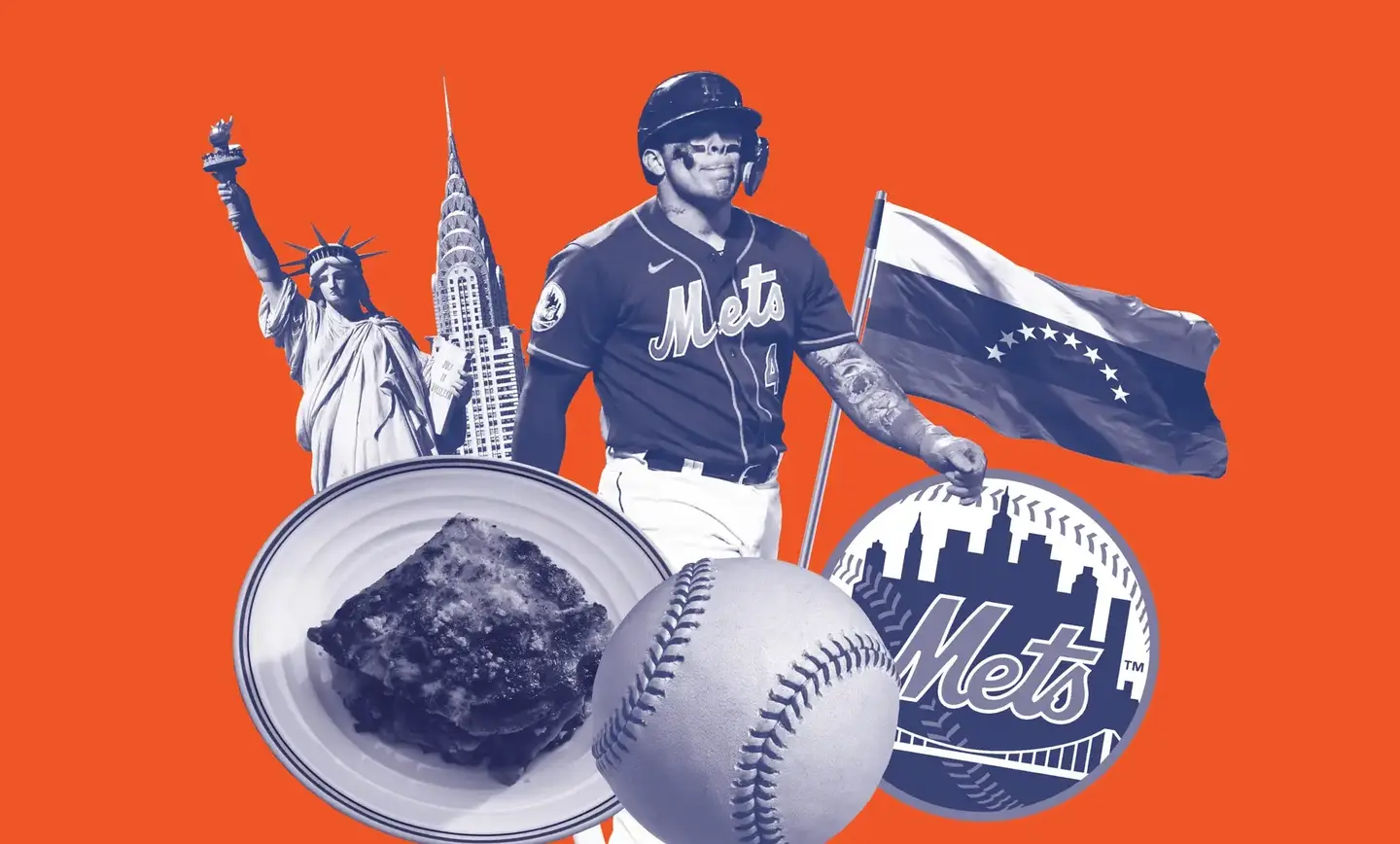
The Unexpected Dish That Brings the Mets Rookies Together
For golden-boy catcher Francisco Álvarez, Venezuelan pasticho is about far more than sustenance.
“In Venezuela, we don’t call it lasagna. It’s pasticho.” That’s what New York Mets rookie Francisco Álvarez told me one summer afternoon in the bowels of Citi Field, the Mets’ home stadium in Queens.
Álvarez looks like a catcher. Muscular and compact, he endures a different game than his teammates, wearing heavy protective gear and sitting crouched behind the batter for nine grueling innings. Most reporters chase down Álvarez to ask about his prolific home run power or rapid ascent to the Major Leagues at such a young age—but I was after a different kind of story, one about the curious ancestral dish he’s become known for in the Mets clubhouse.
Pasticho sounds like Greek pastitsio (the layered casserole of tubular pasta, spiced ground beef, and bechamel) but has more in common with lasagna bolognese. Both call for lasagna noodles, slow-simmered ragù, nutmeg-laced bechamel, and a top layer of bubbling crisp-edged cheese. But what distinguishes pasticho (or at least Álvarez’s family’s version of the dish) from lasagna bolognese are a few extras: thin slices of ham, fresh mozzarella, a hint of cumin in the meat sauce, and torn basil leaves strewn throughout.
Like many Venezuelans, Álvarez grew up eating pasticho, but that wasn’t the case for fellow rookies Mark Vientos and Brett Baty, who hail from places as far flung as Pembroke Pines, Florida and Spicewood, Texas, respectively. So earlier this year, when a game was rained out, Álvarez invited his teammates back to his apartment to introduce them to one of his favorite childhood dishes. Little did they know, Álvarez had never made pasticho in his life: That same day, he called his mom to ensure he got the family recipe just right.
From the moment everybody took a bite, it was clear: Álvarez couldn't just play ball; he could cook.
To understand what pasticho meant to Álvarez, I went to the source: Álvarez’s mother, Yolanda. When asked how she felt about her son’s first pasticho, she said, “I didn’t think he’d want to spend his day off cooking. But I was proud he wanted to follow the family recipe. As a kid, he would always ask me to make it for him, because he thought it made him play better.”
Pasticho is a nostalgic dish for Venezuelans of all walks of life, according to Ivo Díaz, the Venezuelan-born owner of the Venezuelan restaurant Casa Ora in Brooklyn. Díaz ranks pasticho just behind arepas, pabellón (shredded stewed beef with rice and beans), and hallacas (Venezuelan tamales) in terms of culinary importance. But perhaps because Americans equate lasagna with Italian food and seek out arepas and the like at Venezuelan restaurants, pasticho hasn’t caught on in the U.S.
Few Americans realize that Venezuelans are one of the top three pasta-consuming nations in the world, according to Coldiretti, the Italian agricultural organization. That’s largely because, just after World War II, hundreds of thousands of Italians emigrated to Venezuela.
“Every city in Venezuela makes pasticho slightly differently,” said Díaz. Some layer in sliced boiled potatoes, hard boiled eggs, shredded chicken, or even hot dogs. Then there’s pasticho de berenjena, in which thin slices of cooked eggplant replace the lasagna noodles, not unlike eggplant parmigiana or Greek moussaka.
The thing about pasticho is, it’s a labor of love. Sure, there’s nothing technically complicated about the dish, but between searing and simmering the ground beef, whisking up the bechamel sauce, boiling the noodles, and assembling all the layers, making pasticho takes time. So when Álvarez carved out an afternoon to cook for his team, it was an act of altruism. You make pasticho for people you care about.
The Mets signed Álvarez out of his native Venezuela at age 16. When he debuted in the Major Leagues last year, he was the youngest player in baseball, at 20 years old. And he’s turning heads: This season, he nearly broke an all-time record for most home runs by a catcher age 21 or younger. “With all due respect to my teammates, I see myself as a leader,” Álvarez told me, tacitly acknowledging his age.
For Álvarez, leadership off the field means cooking pasticho for his hungry teammates, whom he calls his brothers. “The most important part of being a catcher is to go out there every day with happiness. I want that positivity to rub off on everyone around me,” he said. This approach isn’t lost on Álvarez’s mother, who recalls one moment from the season when she was particularly proud. “He hit a game-tying home run in Arizona. I was so happy to see how excited he was running around the bases. He has always played the game he loves with that amount of joy.”
Keep Reading
Continue to Next Story










